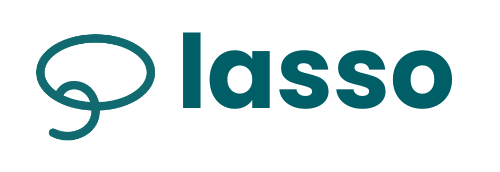In heavy equipment manufacturing, forged components are critical for ensuring durability, strength, and reliability in machinery like excavators, bulldozers, and cranes. However, sourcing these components can be a significant cost driver due to their specialized production processes and material requirements. Implementing cost-effective procurement strategies is essential to maintain profitability while meeting quality and performance standards. This blog post explores practical approaches to optimize the procurement of forged components, balancing cost, quality, and supply chain efficiency.
Understanding the Importance of Forged Components
Forged components, such as gears, shafts, and structural parts, are integral to heavy equipment due to their superior mechanical properties. The forging process enhances material strength by aligning the grain structure, making these parts ideal for high-stress applications. However, the high cost of forging—driven by raw material prices, energy-intensive processes, and precision requirements—necessitates strategic procurement to control expenses without compromising quality.
Key Strategies for Cost-Effective Procurement
1. Supplier Relationship Management
Building strong, long-term relationships with reliable suppliers is a cornerstone of cost-effective procurement. By fostering partnerships, manufacturers can negotiate better pricing, secure favorable payment terms, and gain access to supplier expertise for process improvements.
Actionable Tip: Conduct regular supplier evaluations to assess performance on quality, delivery, and cost. Use these insights to consolidate your supplier base, focusing on those offering consistent value.
Benefit: Long-term contracts with trusted suppliers often lead to volume discounts and priority access to materials during supply chain disruptions.
2. Leverage Bulk Purchasing and Forecasting
Accurate demand forecasting allows manufacturers to order forged components in bulk, reducing per-unit costs. By analyzing historical usage data and market trends, procurement teams can anticipate needs and negotiate bulk discounts.
Actionable Tip: Implement advanced forecasting tools or ERP systems to track component demand and align procurement schedules with production timelines.
Benefit: Bulk purchasing minimizes price fluctuations and reduces administrative costs associated with frequent, small orders.
3. Material Optimization and Standardization
The choice of materials significantly impacts forging costs. Standardizing component designs to use common materials or grades can reduce expenses while maintaining performance.
Actionable Tip: Collaborate with engineering teams to design components that use cost-effective, readily available alloys without sacrificing strength or durability.
Benefit: Standardization simplifies inventory management and reduces the need for custom forgings, which are often more expensive.
4. Near Sourcing for Agility
While global suppliers may offer a discount on cost, domestic sources can provide a level of agility, resilience, speed, and security that international suppliers cannot.
Actionable Tip: Perform thorough audits of potential international suppliers, focusing on certifications (e.g., ISO 9001), production capabilities, and logistics reliability.
Benefit: Access to competitive pricing from global markets can reduce costs by 10-20%, depending on the region and component complexity.
5. Adopt Technology for Process Efficiency
Investing in technologies like digital procurement platforms or supply chain analytics can streamline sourcing processes and identify cost-saving opportunities.
Actionable Tip: Use AI-driven tools to analyze supplier pricing trends, optimize order quantities, and monitor market conditions for raw materials.
Benefit: Data-driven decisions can reduce procurement cycle times and uncover hidden savings in the supply chain.
6. Negotiate Value-Added Services
Suppliers often offer value-added services, such as just-in-time (JIT) delivery, kitting, or post-forging machining, which can reduce downstream costs for manufacturers.
Actionable Tip: Include value-added services in supplier negotiations to shift responsibilities like inventory holding or secondary processing to the supplier.
Benefit: These services lower operational costs and improve production efficiency by reducing in-house processing needs.
Balancing Cost and Quality
While cost reduction is critical, maintaining the quality of forged components is non-negotiable in heavy equipment manufacturing. Poor-quality forgings can lead to equipment failures, safety risks, and costly downtime. To ensure quality:
Implement Robust Quality Assurance: Require suppliers to provide material certifications and conduct regular quality audits.
Invest in Supplier Development: Work with suppliers to improve their processes, ensuring consistent quality at competitive prices.
Use Performance Metrics: Track supplier performance using key performance indicators (KPIs) like defect rates, on-time delivery, and responsiveness.
Case Study: Success in Action
A leading heavy equipment manufacturer reduced procurement costs for forged components by 15% over two years by adopting a multi-pronged strategy. They consolidated their supplier base from 12 to 5, negotiated long-term contracts with volume discounts, and standardized material specifications across their product line. Additionally, they implemented a digital procurement platform to monitor supplier performance and optimize order schedules. The result was a leaner supply chain, improved component quality, and significant cost savings without compromising production timelines.
Conclusion
Cost-effective procurement of forged components in heavy equipment manufacturing requires a strategic approach that balances cost, quality, and supply chain reliability. By building strong supplier relationships, leveraging data-driven forecasting, standardizing materials, exploring global sourcing, and adopting technology, manufacturers can achieve significant savings while maintaining the high standards required for heavy-duty applications. Implementing these strategies not only reduces costs but also strengthens the supply chain, ensuring long-term competitiveness in a demanding industry.
Get the White Paper: Streamlining Procurement Processes for SMB Manufacturers
Get instant access to our white paper on Must-Know Procurement Tips for SMB Manufacturers by filling out the form below.
Get in Touch
Learn more about Lasso supply chain solutions for SMB manufacturers
Please complete the form and we will be in touch as soon as possible.







